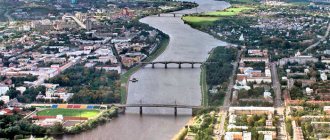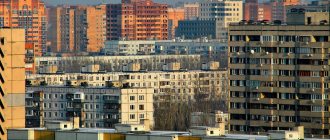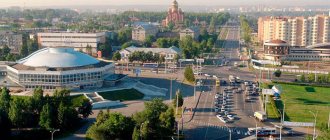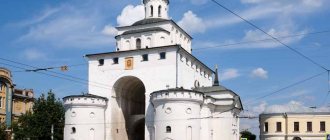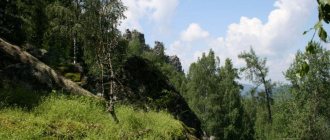How many people live in the city of Tula, what is the population as of January 1, 2022, what number of people live officially, is it increasing or decreasing in municipal areas, growing or vice versa, decreasing, decreasing and where?
Statistics have always interested people and no matter what it concerns, and we are interested in it for a variety of reasons, out of curiosity and for other, very different reasons, we want to know about something, for example, about a given topic, which we will deal with below.
Current data
According to Tulastat, 475,161 people live in Tula in 2022. This is 3944 less than in 2022. The reduction is not caused by the pandemic. According to estimates by the Federal Headquarters for Control of COVID-19, 200 people died from coronavirus from March to June. The decrease in numbers this year is due to other reasons.
The main reason is that the mortality rate is higher than the birth rate. In 2018, Deputy Prime Minister Tatyana Golikova noted that the mortality rate in the region is one of the highest in the country. In the first three months of 2022, 2.4 times more people died than were born. Over the same period in January - March 2022, this figure was 0.2% less. The average age of Tula residents is 43.5 years, in the country as a whole - 41 years.
To improve the demographic situation, it is necessary that at least 3 to 4 children be born in each family within 15 years. But the city is experiencing a decline in the birth rate. Migration to the region will help stabilize the situation.
Statistics by year
The decline in numbers began in 1992. Let's compare the number of residents of Tula by year:
- 2005 – 515200.
- 2006 – 509000.
- 2007 – 504000.
- 2008 – 500000.
- 2009 – 496035.
- 2010 ‑ 501169.
- 2011 ‑ 500314.
- 2012 ‑ 499511.
- 2013 ‑ 493819.
- 2014 ‑ 490508.
- 2015 ‑ 487841.
- 2016 ‑ 485930.
- 2017 ‑ 485221.
- 2018 ‑ 482873.
- 2019 ‑ 479105.
The population has decreased by 36,095 people over the past 15 years. The decrease occurred unevenly from year to year, for example, in 2006 the city lost 6,200 people compared to 2005, and in 2017 only 709.
Neighbours. Tula: a city from another league
New project YA62.ru
Neighbors starts with material about the closest (less than 150 km in a straight line) and most similar city to Ryazan - Tula. Judge for yourself, Tula is almost the same age as Ryazan, the cities are almost identical in population, and the distance from Moscow is also the same. Therefore, we can safely say that these two cities are ideal for comparison.
Ryazan trace
In the “Neighbors” project, we will pay special attention to the connection of the cities under study with Ryazan - these can be historical or modern points of contact or toponymic traces.
Tula in this sense is one of the “most Ryazan” cities. Let's start with the fact that, according to one of the most popular and logical versions, the city was founded precisely by the Ryazan princes, who erected an oak fort at the confluence of the Tulitsa and the Upa River. According to their idea, the new town was supposed to serve as a kind of guard post on the border of the Ryazan lands. The first reliable mention of Tula in documents is also directly related to Ryazan. It is contained in the contractual document between the Grand Duke of Moscow Dmitry Ivanovich and the Grand Duke of Ryazan Oleg Ivanovich in 1382.
It is not surprising that “Ryazan traces” are also found in Tula toponymy. One of the main streets of the city is called Ryazanskaya. There are Ryazhskaya and Mikhailovskaya streets. In addition, the city has a Ryazhsky railway station.
How Tula meets
The two main meeting points for Tula guests with the city are the bus station on Lenin Avenue and the Moskovsky railway station.
Since there is no direct railway connection between Ryazan and Tula, Ryazan residents arrive at the central Tula bus station. Its main distinguishing feature is a two-meter fence separating the platform from the bus boarding area. To be honest, I have never seen such a strange design anywhere else. Why is there this fence in front of the platform when its whole purpose is for buses to drive up to it and pick up/drop off passengers?
Another highlight of the Tula bus station is the beam in front of the exit to the platforms. It is located approximately at a height of 170 cm and, if your height is above this mark and you are also distracted by something, you are guaranteed a bump. So don't yawn.
At the Moskovsky station you won't get hit in the forehead with a beam. And even on the contrary, here you will be hospitably greeted by several monuments, high platforms with an electronic scoreboard (I wonder if such a miracle will ever appear in Ryazan?) and a neat station building.
But the square in front of the Moskovsky railway station will certainly make you despondent - eateries, dust, a gigantic parking lot and “coffin-carrying” slots will definitely not improve the mood of a Tula guest.
To be fair, it must be said that not only PAZs go to the Moskovsky Station, but also trolleybuses, trams, normal buses, and minibuses.
Paradoxical Tula transport
Public transport in Tula is a separate matter. It's worth starting with the tram. Yes, Tula managed to preserve the most environmentally friendly, capacious, regular, safe and predictable of all existing land transport modes. But exactly what to save. The state of the tram infrastructure leaves much to be desired. And if the old, indestructible Tatra cars that rumble around the city are not so scary (a good tram, if properly cared for, can easily last 50 years or more), then the condition of the rails is shocking. Their curvature sometimes makes you wonder how trams manage to stay on track and not tip over. And it shakes and sways in Tula trams, just like on a bumpy rural road.
Few people think about it, but a tram system, especially one as developed as in Tula, is a real gift for a modern city. With the right approach, a tram can transport almost the entire city, thereby eliminating traffic jams and significantly improving the environmental situation.
To do this, firstly, it is necessary to repair the rails kilometer after kilometer, preferably making them seamless.
Secondly, the route network should be optimized, reducing the number of routes from the current 11 to four, or maximum five. At the same time, make a transfer scheme, like in the subway. Then you will have trams on one line one after another. And, by the way, in this case there will be no need to move the switches with a crowbar like in the Stone Age, because the trams will go along the same route along the same line.
But here it is important to create convenient transfer hubs and a ticket menu that would provide local residents with free transfers (not necessarily for tourists).
Thirdly, it is necessary to separate tram tracks from cars. Moreover, this can be done either expensively and thoroughly - by physical separation, or cheaply - with the help of a can of paint and cameras (both methods have been well used for the last couple of years and show excellent results in Moscow). Now Tula trams are stuck in traffic jams among cars, thereby negating all the advantages of this type of transport.
Fourthly, it is necessary to make normal platforms so that people from the tram do not step directly under the wheels of cars.
Moreover, the width of most Tula streets allows this, and where it does not allow it, “Viennese-type” platforms are perfect.
Do the Tula authorities understand that the tram needs to be developed, and not just somehow kept alive, is a big question... And, apparently, the answer is negative.
In addition to trams, Tula has developed trolleybus and bus traffic. Moreover, most of the buses are environmentally friendly “methane” NEFAZs, which are occasionally found in Ryazan. There is no talk of any smoky old LIAZs in the city. They are occasionally encountered only on suburban routes.
Trolleybuses here are also in good condition. This is perhaps the most “decrepit” specimen.
As you can see, the oldest Tula trolleybus is approximately the same age as the newest Ryazan one. Most trolleybuses in Tula are completely or partially low-floor, and this, in addition to being accessible for people with limited mobility, also means faster disembarkation and boarding and, as a result, more efficient operation on the line. In addition to being low-floor, Tula trolleybuses operate in electric bus mode, folding their “horns” and driving through streets without a contact network or avoiding obstacles.
There are also Belarusian trolleybuses “minibuses” “Vytautas” in Tula - maneuverable and compact two-door cars that can also travel wirelessly.
At the same time, “gifts” from Moscow also travel to Tula. Just admire them.
Modern, low-floor, cool-looking buses and trolleybuses that still keep running. And now let’s remember the falling apart and smoking scrap metal that the Golden-Headed One sent to Ryazan... Apparently, Tula officials made a fuss and snatched something better from their rich neighbor, and the lazy Ryazan mediocrities, as usual, got the ferrous metal from the landfill.
In general, only after visiting the “twin city” of Tula, you understand the depth of the transport hole into which Ryazan has fallen thanks to the incompetent corrupt officials who have ruled our city for the last decades. And the worst thing is that the situation is completely hopeless.
Based on everything described above, one gets the feeling that everything is fine in Tula transport. But if so, why does the city have such a wild, almost Ryazan-like number of minibuses? Although even in Ryazan there are quite a lot of “naturally passenger” examples like “Gazelle Next” or “PAZ Vector Next”, and in Tula there are almost entirely minibuses converted from cargo vans. And if in Ryazan the Peugeot Boxer and Ford Transit are popular in the class of “livestock trucks” (this is not a characteristic of their passengers, but rather an indicator of the attitude of commercial carriers towards their clients), then Tula is flooded with Iveco.
Why there are so many road parasites in Tula, with its decent transport, I still don’t understand. Even the presence of remote villages in the city, into which it is not economically feasible to operate large vehicles, still does not explain the Tula minibus anomaly.
In general, a “traffic jam of minibuses” is as commonplace for Tula as it is for Ryazan.
There is also an acute shortage of dedicated lanes for public transport in Tula. They are just asking to be seen on Lenin Avenue, Proletarskaya and Oktyabrskaya streets. But for some reason the authorities don’t agree to this. Although such a reform does not require large financial investments.
Dust and parking
Tula is a dusty city. Obviously, here, like here, the administration pours tons of cheap sand onto the streets in winter, and then does not particularly strive to clean it up. And it is impossible to completely remove sand of this quality from the streets. It will still get stuck in the cracks and then turn to dust.
Another reason for dustiness is cars parking on lawns. Here everything is exactly the same as in Ryazan - Tula residents abandon their cars anywhere. It is noteworthy that I came across the creepiest lawn parking lot on Ryazanskaya Street. In general, Tula and Ryazan are brothers forever.
At the same time, there is paid parking in the city center. And it costs twice as much as the Ryazan one (40 rubles), and the fine for non-payment is 2.5 times higher (2,500 rubles). So Ryazan drivers, whining on social networks about the “unbearably expensive” 20-ruble parking, should probably keep quiet or take public transport.
I hope that Tula will continue to expand paid parking zones and extend them to residential areas and courtyards. This is without a doubt the only correct way for any modern city.
Trucks and pedestrians
Pedestrians in Tula have a hard time. Wide roads, spontaneous parking, a relic of the Soviet past in the form of underground passages in the very center of the city (Ryazan, fortunately, was spared from this), the absence of signs for pedestrian crossings and zebra crossings, stupid fences - all this makes Tula a very hostile city.
Add here even heavy vehicles, which for some reason are scurrying back and forth around the city center.
In general, Tula is even inferior to Ryazan in terms of comfort for pedestrians.
Public spaces from another planet
Speaking in the previous paragraph about convenience for pedestrians, I meant the streets of Tula, but not public spaces. They are here like on another planet. It’s even shameful to compare them with their Ryazan “analogues”.
Not so long ago in Tula they first conceived and then implemented a super-ambitious project for the reconstruction of the embankment near the Tula Kremlin, as well as the transformation of nearby Metallistov Street into a pedestrian street. It’s impossible to say that it turned out well. Because it turned out amazing!
Let's start with Krestovozdvizhenskaya Square, where the new pedestrian zone begins. Tula architects won it from motorists, and I am sure that not a single driver, even the most retarded driver with a terminal car brain stage, ultimately spoke out against such improvement. Just look at what the area was and what it has become.
The same miraculous transformation occurred with the once dull Metallist Street. It has turned into a great space with stylish outdoor furniture, pleasant lighting, and thoughtful landscaping.
The only thing Tula Arbat lacks so far is business. It can be seen that cafes, snack bars, private museums and galleries have not yet managed to move here. After all, the reconstruction is still not 100% complete. But there is no doubt that in a couple of years this will be a space overflowing with life and fun.
What a real Tula miracle already is - Kazanskaya embankment. In just a few years, the former industrial waste dump of one of the local enterprises turned into a public space in no way inferior to Moscow’s Zaryadye, St. Petersburg’s New Holland or Galitsky Park in Krasnodar.
All the achievements of modern design and urban thought are collected here - the topography, the multi-level design (the embankment is located on three “tiers”), the zoning (everyone will find a place according to their taste and current mood), stunning lighting, and a children’s playground where adults can I want to play with my children, and direct contact with water (no fences or parapets!), and stunningly stylish landscaping with steep lawns (and yes, you can walk on them).
Well, as the final cherry on the cake - the licked, brightly illuminated Tula Kremlin.
At the same time, the Kremlin itself is much inferior in scale and architecture to the Ryazan one. But everything that is around him cannot even be compared with the collective farm squalor that is happening near the Kremlin in Ryazan.
If you think that's all, you're wrong. Also, not far from the Kremlin in Tula, a “hipster” art space “Iskra” was organized. And everything there is also very modern and advanced - pallets, sun loungers, lawns, trendy cafes, co-working spaces, designer gadgets and jokes, a clean, comfortable and free toilet.
In Ryazan, alas, there is nothing even remotely reminiscent of the Iskra quarter in terms of the level of understanding and organization of modern urban space. We still have the same bureaucratic collective farm - tiles, trash cans, benches and some kind of crap in the center of the circle. It is this set that Ryazan officials call public space.
Eyesore
The picture in the center of Tula is spoiled by the building of the regional government. It just overlooks the landscaped Krestovozdvizhenskaya Square. It is spoiled not only and not so much by the architecture (what can you do, such houses were in fashion in the 80s and this is also our history, which must be preserved), but by the gigantic parking lot located on three sides of the administrative building.
It’s clear that Tula officials love to drive cars to work and receive motorist guests in their offices, but they also need to have a little conscience. The Ryazan government somehow makes do with the courtyard of its building and does not venture out onto city streets with its fleet of vehicles, which means that the Tula government may well reduce the parking area by about 10 times.
By the way, the government of the Ryazan region does not have a huge parking lot due to circumstances. After all, a very similar building was built for regional officials on Sobornaya Street, but due to the crisis of the 90s, they were forced to hand over the unfinished building to the Central Bank. And there, of course, the parking area would be the envy of colleagues from Tula.
More about public spaces
In fact, this is not all about the improvement of Tula. As I was leaving the city, I noticed a small park. It is located near the bus station, next to the building of Tula State University. And although the park is quite small, it is very pleasant. Everything here is smart - the benches around the tubs with plants, the lawn, and the trees. Well, the highlight is the cafe-staircase, which combines the functions of catering, an amphitheater for gatherings and an observation deck. A very ingenious and inexpensive solution.
New Year's capital
Tula recently held the New Year's Capital festival. And she did it, in everyone’s opinion, brilliantly.
Ryazan, which has been handed the baton for 2022, does not have the slightest chance of surpassing its neighbors in terms of organizing the holiday. Even if Sobyanin is appointed mayor, and public spaces are created by Sergei Kapkov (the man who transformed Gorky Park in Moscow. - Ed.)
) and Natalya Fishman (assistant to the President of Tatarstan, organizer of many public spaces in the republic. -
Ed.
). The main thing is not to lose face at all.
Ryazan's reputation is also not to its advantage. Thanks to the Comedy Club and younger comedians, Ryazan has become a symbol of backwardness and “ruralism” (which, in principle, is not so far from the truth). What are your associations with Tula? Absolutely delicious and enjoyable! Gingerbread, samovars, gunsmiths, and even Leo Tolstoy and Yasnaya Polyana to boot. That is, from Ryazan, unlike Tula, they initially do not expect anything good.
Conclusion
Tula is a contradictory city. On the one hand, in comparison with Ryazan, it obviously plays in a different league both in terms of the level of transport organization, and in the quality of the urban environment, and in many other aspects; on the other hand, it has a crooked tram that is stuck in traffic jams, a lack of allocated lanes and hatred of pedestrians on many Tula streets do not allow us to talk about it as a city comfortable for people. However, there is hope that the spirit of the Tula embankment, the Iskra quarter, and Metallistov Street will not let go of Tula officials and they will continue to work in the right direction.
Here you should understand: what has already been done in the city is not just a beautiful embankment, a fashionable youth space and a stylish pedestrian street. This is an application to move away from provincialism, to change people’s worldview. You definitely won’t be able to sell the Ryazan Forest Park or Lenin Square under the guise of good landscaping to Tula residents. By the way, I wonder what the residents of Tula would say if they saw the wonders of Ryazan improvement in recent years. They would probably smile condescendingly.
Verdict
Living in Tula is definitely more comfortable than in Ryazan.
Tula. brief information
Date of foundation:
1146
Population:
482,843 inhabitants.
Area:
145.8 sq.
km. Distance from Ryazan (in a straight line)
: 145 km.
Distance to Moscow:
174 km.
Head of Administration:
Evgeny Avilov (in position since March 2011).
Fare on municipal transport:
20 rubles (15 rubles for non-cash payments).
Fare in commercial transport:
25 rubles (20 rubles for non-cash payments).
A large photo report from Tula is available here. The next material in the series will be dedicated to Kaluga.
Text and photo: Alexander Moiseyuk
The material also uses photographs
from publications and the portal
Information
The region includes 103 municipalities, 19 municipal districts, 23 urban-type settlements and 54 rural settlements. The area of Tula is 1495.6 sq.m., density is 368.8 people per 1 sq.m.
A large number of enterprises of the chemical and metallurgical industry are concentrated here: Machine-Building, OJSC Tula Cartridge, Chamber of Commerce and Industry of the Federal State Unitary Enterprise State Scientific and Production Enterprise Basalt, OJSC Tulachermet and a number of other large factories. This is one of the most developed industrial regions of the Central Federal District. The city's environmental problems are associated with the high density of industrial enterprises.
The newspaper Arguments and Facts provided data on emissions of pollutants into the atmosphere. Industrial enterprises emitted 106.63 thousand tons into the atmosphere in 2022, an increase of 2.5% compared to 2022. The most harmful emissions (59.2%) were recorded in Tula. Some enterprises dump production waste into the river.
The region ranks 32nd in terms of living standards in the Russian Federation. The growth of household incomes is projected to be higher than the average for the Central Federal District due to economic growth and increased investment.
Tula population census, how many people live on January 1?
What is the official population of Tula for 2022, how many people live according to the census, how many people are in urban areas as of January 1, trends in profit and loss, whether their number is increasing or decreasing, such questions are of interest to many and we will try to get answers to them.
The city of Tula with all its administrative districts is part of the Russian Federation, a municipal entity with the status of an urban district, the regional center of the Tula region.
We will look into the population of the city of Tula, how many people live as of January 1, 2022, and how many people officially live in urban areas.
Nationalities
People of different nationalities live in Tula:
- Russians make up the majority - 95.2%.
- Ukrainians - 1.33%.
- Tatars - 0.54%.
- Armenians - 0.39%.
- Belarusians - 0.36%.
- Germans - 0.28%.
- Moldovans - 0.14%.
- Tajiks - 0.12%.
A small percentage of Azerbaijanis, Gypsies, Jews, Georgians, Vietnamese, Lezgins. Due to the arrival of migrants from the CIS countries, the percentage composition of the population is changing.
Age and sex composition
In the Tula region, according to Rosstat, there are 669,703 men and 809,115 women. In the table you can see the change in the size of the male and female population depending on age. A turning point in the quantitative ratio of men and women occurs after 40 years.
As age increases, the male population decreases. At age 70 and over, the difference is 84,100. By 2024, rising life expectancy for men is expected to narrow the gender gap.
Of the total working age population, there are 425,087 men and 374,235 women. By 2024, the number of workers will increase by 2.5% due to an increase in the retirement age.
Interesting facts about the city
Today Tula is actively improving. More recently, a promenade for walking has appeared in the city; new parks and recreation areas are built every year, and interesting street sculptures are installed. The Tula region is the birthplace of the famous Russian writer Lev Nikolayevich Tolstoy. Today, a tourist museum is open in his estate in Yasnaya Polyana, open all year round. The city also boasts a rich cultural life. Festivals of various themes are regularly held in Tula and its environs. Today the city is just developing as a tourist center, making the cost of hotel stays and excursions reasonable. All districts of Tula can boast of a developed infrastructure - you can choose a place to live based on your own taste and financial capabilities. What’s especially nice is that you can get from one end of the city to the other by private car in just 30-40 minutes, excluding traffic jams.
Migration
Tula is one of the economically developed cities of Russia, a large industrial and scientific center. People come to live from the former republics of the USSR and from some neighboring regions with lower incomes: Yaroslavl, Oryol, Kaluga regions.
The figures for migration between the constituent entities of the Russian Federation are as follows:
- 3226 arrived, 3440 Tula residents left for another area.
- In the first 3 months of 2022, 10,294 people arrived, 9,731 left, the increase was 563.
- Migration external to the region: 6391 arrivals and 5828 departures.
- Population growth due to migration with the CIS countries in 2020 amounted to 700 people, 77 people from other foreign countries.
- There were fewer relocations within the region by 799 people (17.0%).
- 88% of Tula residents leaving remain in the Central Federal District, mainly in Moscow and the Moscow region, 3.4% move to the Northwestern Federal District, 3.2% to the Southern Federal District, 2.3% to the Volga Federal District and 0.9% to the Ural Federal District.
Current data on population migration is posted on the Tulstat website.
Forecast
The Tula Region Committee for Civil Registry Offices and ensuring the activities of justices of the peace published data that in May 2022, 845 births were registered in the region (in April 2020, 69 more babies were born) and 2,159 deaths (plus 566 cases by April). In May, the population of the Tula region decreased by 1,341 people.
The number of inhabitants is predicted to decrease in the future. According to the Analytical Center of the Institute of Digital Transformations and Economic Trends Research, the rate of population decline will reach 11,500 people by 2024.
In 2013, a program was adopted in the region to qualitatively improve demographics, with plans to maintain the population by 2021. But, as the regional governor admitted: “It has not yet been possible to reverse the trend of a decline in the number of residents of the region.”
Despite the decrease in the number of residents and the unfavorable environmental situation, the city is actively developing and being built. The tasks of reducing harmful emissions into the atmosphere, improving the quality of life, and creating additional jobs are being solved. In May of this year, the regional governor held a meeting on the situation on the labor market. Almost 2,800 jobs should appear in the region in 2020.
What is the population of the city of Tula?
| Urban district city of Tula | 535 707 | 467 955 | 67 752 |
| Tula | 467 955 | 467 955 | 0 |
| including inner city areas: | |||
| Zarechensky district | 90 215 | 90 215 | 0 |
| Station area | 73 392 | 73 392 | 0 |
| Proletarsky district | 145 750 | 145 750 | 0 |
| Sovetsky district | 67 067 | 67 067 | 0 |
| central District | 91 531 | 91 531 | 0 |
With the population of the city of Tula as of January 1, 2022, how many people live in this territory, people in municipalities and this locality, this territorial unit of the Russian Federation, that’s what we figured out here, we made our contribution to satisfying the requests of those interested in this statistical information .




